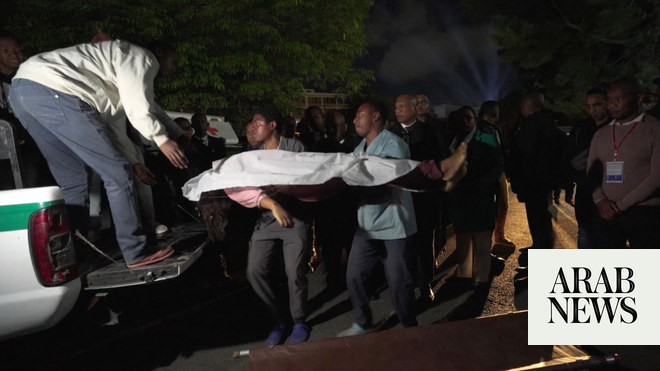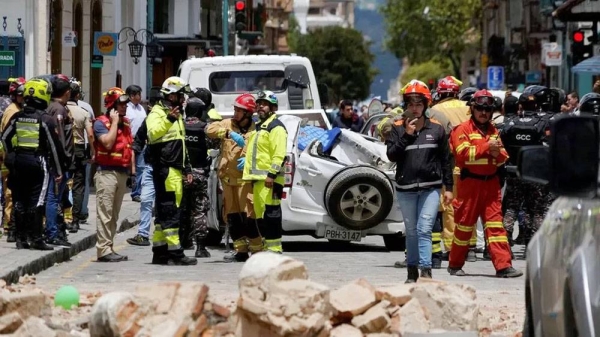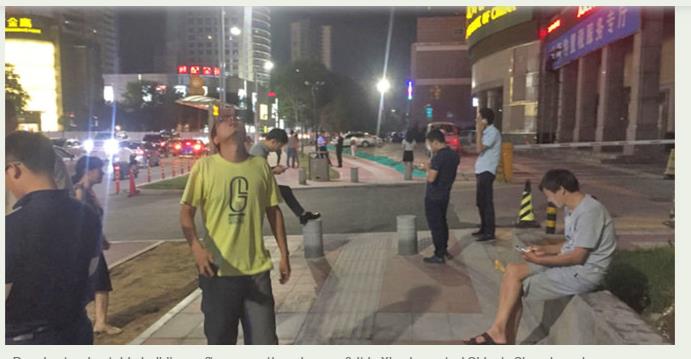
At least 162 people have been killed after a magnitude-5.6 earthquake struck Indonesia’s main island of Java, triggering landslides and causing buildings to collapse.
The US Geological Survey said the quake, which struck late in the afternoon, was centred in the Cianjur region of West Java province at a depth of 6.2 miles (10km).
Ridwan Kamil, the governor of West Java, said 162 people had been killed.
“The majority of those who died were children,” he said, adding that many were students who were taking extra lessons. “So many incidents occurred at several Islamic schools.”
Footage from Cianjur showed a school building with a collapsed roof, as well as badly damaged homes where brick walls had been torn down. At a local hospital, overwhelmed by the number of victims, the injured were treated outside, some lying on mattresses or blankets on the ground as they were given oxygen masks and IV drips.
Gen Suharyanto, the head of the National Disaster Management Agency (BNPB), said the nearby Sayang hospital had no power after the quake, hampering efforts to treat victims, and that more medical staff were needed.
Mus Mustopa, who lives in Padaluyu, a village in Cianjur, told Indonesia’s Kompas TV he helped a family recover the body of an 80-year-old woman who had died in the quake. It happened suddenly, he said. “I wasn’t prepared and saw houses reduced to rubble … Some 50 houses are damaged, with around 10 being heavily damaged.”
Several landslides were reported across Cianjur. Dozens of buildings were damaged, including an Islamic boarding school, a hospital and other public facilities, the BNPB said. Information was still being collected about the extent of casualties and damage, the agency added.
Rescue workers and volunteers searched for victims who were trapped or injured beneath the rubble of collapsed buildings.
Ima Mafazah, a volunteer with the Indonesian Red Cross, said tremors continued late into the evening. “Until now, the earthquake still happens, but not as big as before. A minute ago it happened again. Many people don’t want to stay at their homes,” she said, adding that people were traumatised and afraid, and were sleeping outside.
Homes had been damaged across a wide area, and access was difficult due to cracked roads, said Mafazah. Nurses had been sent by the Indonesian Red Cross on motorbikes to reach the injured as four of the worst-affected areas, about one hour from the main town, were otherwise inaccessible.
Power is down and communications were also affected, making rescue efforts more difficult, she added.
“I fainted. It was very strong,” Hasan, a construction worker who is being treated at the Cianjur regional hospital, told the Associated Press. “I saw my friends running to escape from the building. But I was too late to get out and was hit by the wall.”
The quake was felt in the Indonesian capital, Jakarta, about 60 miles (100km) away, where some buildings were evacuated, and high-rises were shaken.
The US Geological Surveys’s Pager system estimated that up to 242,000 people were exposed to “very strong shaking” and up to 978,000 people to “strong shaking”.
Mayadita Waluyo, a 22-year-old lawyer, told Agence France-Presse that panicked workers ran for the exits of their building in Jakarta as the quake struck. “I was working when the floor under me was shaking. I could feel the tremor clearly,” she said, adding that she walked down from the 14th floor.
Indonesia’s meteorological agency warned residents near the centre of the quake to watch out for further tremors. “We call on people to stay outside the buildings for now as there might be potential aftershocks,” Dwikorita Karnawati, the directory of the agency, told reporters.
Indonesia is especially vulnerable to earthquakes because of its position on the Pacific “Ring of Fire”, the most seismically and volcanically active zone in the world.
In February, a magnitude-6.2 earthquake killed at least 25 people and injured more than 460 others in West Sumatra province. In January 2021, a quake of similar magnitude killed more than 100 people and injured nearly 6,500 in West Sulawesi province.
A powerful Indian Ocean quake and tsunami in 2004 killed nearly 230,000 people in a dozen countries, most of them in Indonesia.











